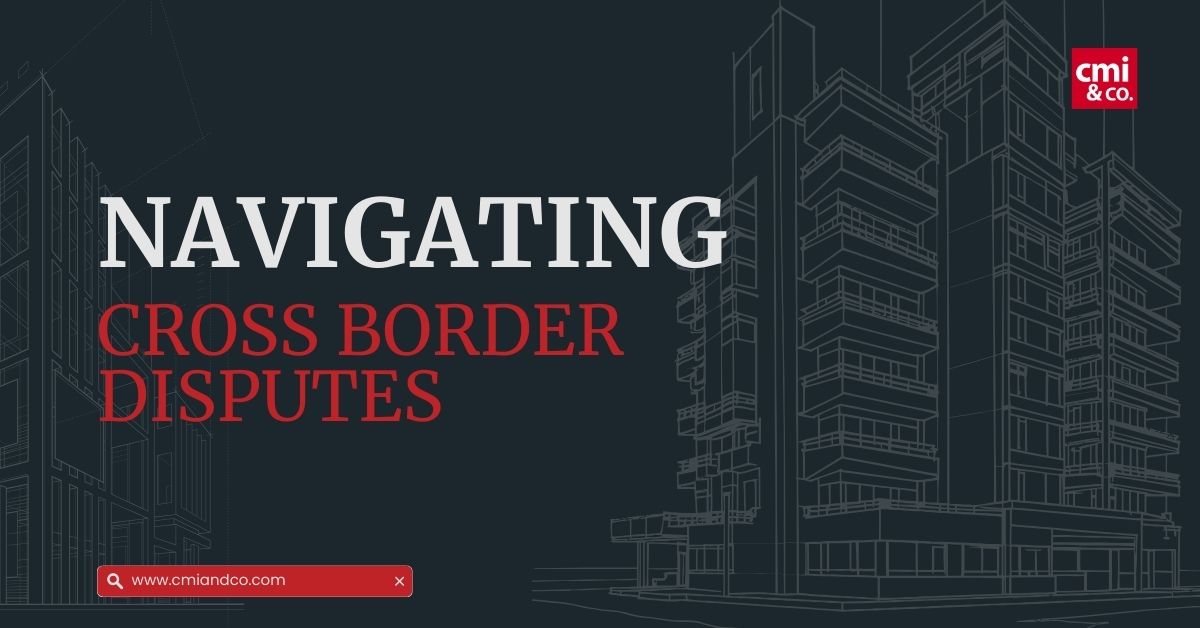Cross-border disputes present unique challenges, especially when they arise in jurisdictions that are unregulated or considered high-risk. A 2025 International Arbitration Survey with 2402 respondents found that a commanding 87% of legal professionals prefer international arbitration for resolving cross border disputes.1
Whether you’re a business leader, an investor, or a legal professional, navigating these disputes requires not only a keen understanding of international law but also practical, proactive strategies to safeguard interests and promote resolution.
Understanding Cross-Border Disputes
Cross border disputes involve parties located in different countries, often subject to varying legal systems, cultures, and business practices.
The complexity increases exponentially when the dispute involves parties in unregulated or high risk jurisdictions where the rule of law may be weak, regulatory frameworks are insufficient, and corruption or political instability can influence outcomes.
The Nature of Unregulated and High-Risk Jurisdictions
Unpredictable legal enforcement
Courts may not follow established legal principles, and decisions can be inconsistent or influenced by local interests.
Corruption and lack of transparency
Bribery, interference, and opaque procedures can undermine the fairness of proceedings.
Limited legal remedies
Certain jurisdictions may restrict the types of damages that can be awarded or may not recognize foreign judgements or arbitration awards.
Political instability
Regulatory changes, expropriation, or even civil unrest can interfere with the process and enforcement of any resolution.
The High Cost of Cross-Border Disputes and Why Strategy Matters
Cross-border disputes can impose substantial financial burdens when not managed with effective strategies. International arbitration costs typically include administrative fees and arbitrators’ fees calculated on a scale based on the monetary value of claims with initial non-refundable filing fees around US$5000 to US$6000 alone.2
The total amounts in dispute often reach billions. HKIAC administered cases were one such example, involving approximately US$11.8 billion in dispute in 2025.3
Without proper strategies, parties face increased risks of prolonged litigation, escalating costs due to jurisdictional complexities, difficulties in enforcement, and potential loss of control over process and outcome. The global cross-border litigation services market was valued at about US$2.67 billion in 2025, illustrating the high expense associated with these disputes.4
These figures make one thing abundantly clear: when it comes to cross-border disputes, the stakes are not just legal, they’re financial too. The combination of high claims, complex jurisdictional hurdles, and unpredictable enforcement means that without a proactive approach, costs can spiral out of control long before a resolution is reached. This is where strategic planning becomes indispensable. The following strategies offer a practical framework for navigating these challenges effectively.
Strategies for Navigating Cross-Border Disputes
Following these strategies can be highly beneficial for parties navigating Cross-Border disputes
Meticulous Contract Preparation
Include jurisdiction and dispute resolution clauses that specify neutral venues for litigation or arbitration, such as London, Paris, or Singapore. Use governing law provisions that choose legal systems with established case law and predictability.
Opt for International Arbitration
International arbitration is often preferred for cross-border disputes, especially in high-risk jurisdictions, as it offers neutrality and enforceability under treaties. Select reputable arbitration institutions such as ICC, LCIA, or SIAC and specify procedures in the contract.
Conduct Due Diligence
Research the legal environment in potential jurisdictions before entering transactions. Seek local legal expertise to understand practical challenges like procedural realities, court efficiency, and enforcement prospects.
Asset Protection
Structure investments to include assets in stable jurisdictions that can be used to satisfy judgements, if necessary. Consider insurance products like political risk insurance to mitigate potential losses.
Monitor and Mitigate Compliance Risks
Stay updated on global sanctions, anti-bribery laws, and regulatory developments that could impact proceedings or enforceability.
Conclusion
Navigation cross-border disputes in unregulated and high-risk jurisdictions demands a proactive approach rooted in strategic planning, legal foresight, and adaptability. By prioritizing robust contractual agreements, selecting neutral dispute resolution forums, and staying vigilant about risks, parties can protect their interests and increase the likelihood of a fair and enforceable outcome when cross-border disputes arise.
Resources
[2] https://iccwbo.org/dispute-resolution/dispute-resolution-services/arbitration/costs-and-payment/
[3] https://www.hkiac.org/about-us/statistics
[4] https://www.datainsightsmarket.com/reports/cross-border-litigation-service-1461898




